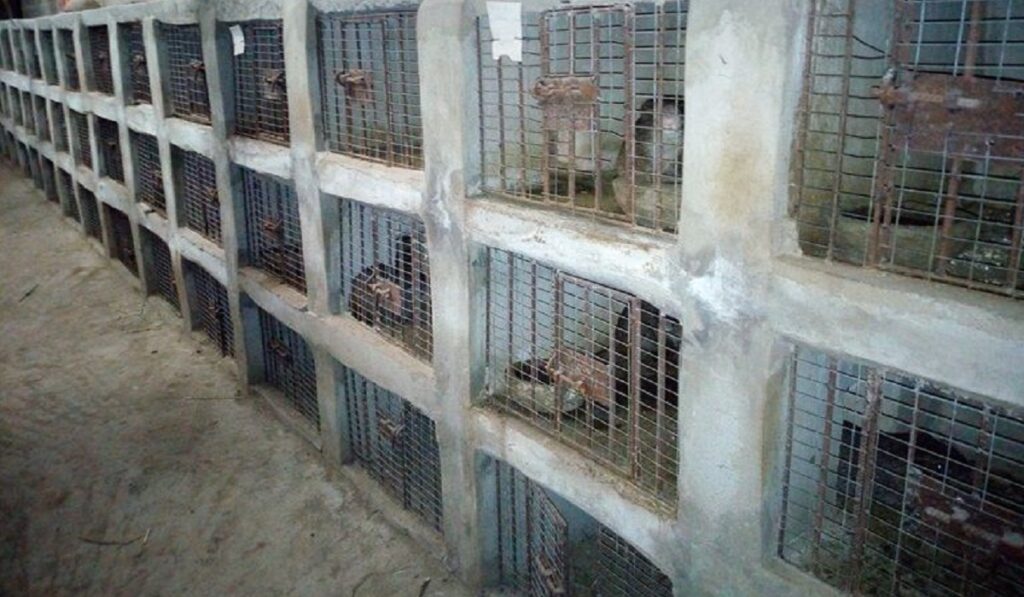Grasscutter production is one of the most profitable and easy to start businesses in agriculture. The demand for grasscutter is also very good and stable.
Let me tell you more about why you should start a business in grasscutter production.
- It requires relatively low capital to start.
- You don’t need a huge space. Your backyard may even be enough if there is enough space to ensure a distance between the residence.
- They multiply quite faster. Two can become ten or more in about a year.
- They are no nuisance. With little effort in handling their droppings, no stench. They should be fine in the backyard.
- The demand is good and stable. You just need to locate your buyer.
- Grasscutter is good meat if you like. High in protein, less in fat.
- You can use it as a hobby and still make money from it. It’s a healthy exercise.
- Just maybe, you may want to help reduce the incidence of bushfires caused by game hunters. Producing grasscutter domestically can help.
Read Also: The Lucrative Grasscutter Production Business; How Much Money to Start?
Now that you are willing to do it. Here is all the information in this complete guide to the grasscutter production business. Read to the end and you are good to go.
Site selection for grasscutter production
Site selection is very important. You want to make sure your new grasscutter project is up to standard. Also, you don’t want anything disturbing the progress. So please consider there;
- Maintain a good distance between the grasscutter housing and the residence so it does not pose any nuisance to residents. Yes, you can do it in your backyard, if the laws allow it.
- Clean water must be available and adequate at all times.
- Avoid placing their cages on steep slopes. It does not help management and movement. Also, do not place cages across waterways.
- Choose areas with well-drained soils. This can prevent waterlogging.
Read Also: Complete Guide on Profitable Rabbit Production and Management
Housing for the grasscutter
You can construct grasscutter housing from;
- Wood and iron mesh
- Metal tubes
- Concrete blocks
- Bamboo
- Mud with cement

Metal Cage 
Wooden Cage 
Cage with cement block
You can be innovative with any combination of the materials above. One important thing to consider is the space requirement.
The floor space requirement for cage construction
You must first consider these divisions in the planning of the cage;
- Adults’ pen
- Mating pen
- Pen for giving birth and feeding the young
- Pen for fattening young grasscutters
Adults requires 0.4m2 per animal.
Production
To start grasscutter production after the housing is done, you need;
- Feeding troughs
- Watering troughs
- Breeding stock ( 4 – 10 females: 1 Male)
Selection of breeding stock
You can get your breeding stock from credible farmers with good records on their animals. We advise you get your stock from different farms to be sure they are not offspring from the same parents. Make detailed inquiries about the animals. If possible get a veterinary officer or an expert to help you choose the right stock.
Read Also: How to Select Quality Breeding Stock to Transform Your Livestock Business
Feeding
The grasscutter is a monogastric herbivore. It feeds mainly on grass. You can supplement with concentrates. Guinea grass, elephant grass, Leucaena, cassava sticks, dried cassava/yam peels, midrib of palm branches, fresh maize husk, sugarcane, groundnut, pineapple crown, and others are some of the common feeds for grasscutter.
Supplementary feeds can be maize, wheat bran, oyster shell and salt.

Elephant grass 
Guinea grass
Reproduction in Grasscutter
These are facts about the reproduction in grasscutter.
- Sexual maturity – Male grasscutter matures in 8 months with a minimum body weight of 2.5kg. The female grasscutter matures in 6.5 months with a minimum body weight of 1.8 kg.
- Sex ratio -1 male to 4-10 females.
- Gestation period – 5months
- Weaning – 6 weeks
- Sexual maturity – 6-8months
- Reproductive rate – 2 times in a year
- Average litter size – 4-10
After weaning you can server the mother (dam) after 2weeks.
Read Also: Know the Correct Gestation Periods of Livestock for Better Management
Good Management/Husbandry practices
These the routine activities you do to make sure your grasscutter stays and healthy and productive. All these tips are very important to observe.
- Observe the animals regularly and carefully to ill health. Early detection helps to effectively manage and prevent diseases from spreading to other animals.
- Clean the cage daily. Add antiseptics to kill germs and other disease-causing pathogens.
- Remove the fecal materials. Build-up can be the breeding grounds for germs and pathogens.
- Clean feed and water troughs.
- Clean the floor of the room.
- Provide clean and fresh water and feed always.
- Do not disturb the animals and make sure nothing disturbs or stresses them. Sudden shocks can cause a stampede and this can kill them.
- When females are 3years old, replace them. Productivity starts going down after that period.
- Replace males at 2years.
- Take records of all the activities and cash transactions. You will need it for planning and assessment of performance.
- Hold grasscutter by the tail or limbs. If you want to transport them live, use a wire-mesh cage or a well ventilated cage.
Reference:
Grasscutter Production – Animal Production Directorate, Ministry of Food and Agriculture (Ghana)


